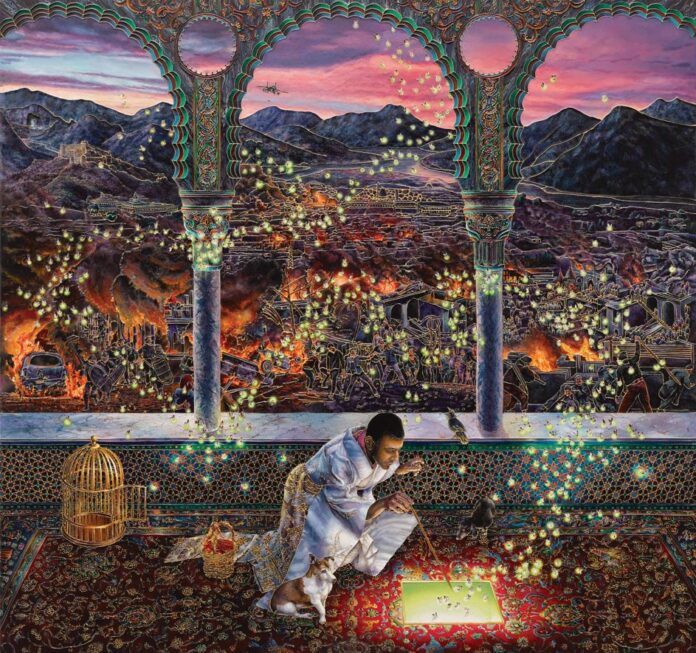
The Museum of Fine Arts, Houston is the current stop on the national tour of “Raqib Shaw: Ballads of East and West.” Born in 1974, the Indian painter spent most of his childhood in the beautiful Valley of Kashmir, a region long marred by sectarian strife. He moved to New Delhi in 1992 and became immersed in his family’s business selling jewelry, textiles, and carpets.
During a visit to London in 1993, Shaw fell in love with Old Master paintings at the National Gallery, and eventually he moved to the British capital, where he has lived ever since.
Shaw has never lost his fascination with such historical Italian masters as Carlo Crivelli and Giovanni Paolo Panini, and today he creates intricate paintings of dream-like, mysterious realms that blend Eastern and Western influences.
Organized by Nashville’s Frist Art Museum and the Isabella Stewart Gardner Museum in Boston, the show takes its title from Rudyard Kipling’s poem “The Ballad of East and West,” often cited for the line “Oh, East is East, and West is West, and never the twain shall meet.” But in fact, explains curator Zehra Jumabhoy (University of Bristol), “Shaw is inspired by Kipling’s next lines, which propose the opposite: when like-minded souls meet ‘there is neither East nor West’ even if ‘they come from the ends of the earth!’”
Shaw blurs the lines between art and ornament; Japanese aesthetics, Mughal artifacts, Islamic textiles, and Indo-Persian architecture converge with citations from Renaissance masters. He paints with porcupine quills and fine needles to render the precise details of delicate flowers or distant mountains, which are outlined in embossed gold.
Though viewers are often beguiled by Shaw’s iridescent surfaces, conflict is present in almost every scene, evoking Kashmir’s turbulent history.
Illustrated above is “Ode to the Country without a Post Office,” which characteristically juxtaposes the tranquil and the horrific. Sitting on a palatial balcony is a kimono-clad Shaw, gazing into an opening in the floor, from which hundreds of fireflies are emerging. Beyond this enchanting scene, however, fire and chaos rage in the town beyond. Once seen, warns Houston’s organizing curator Alison de Lima Greene, Shaw’s paintings “are never forgotten.”
The show is on view through September 2, 2024. For more details, please visit mfah.org.







